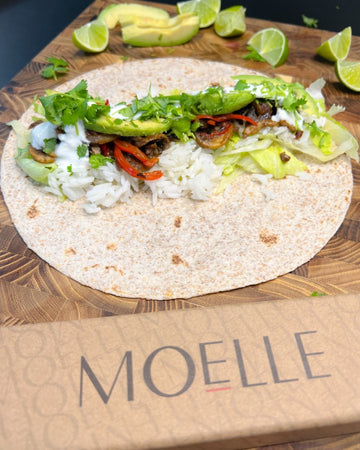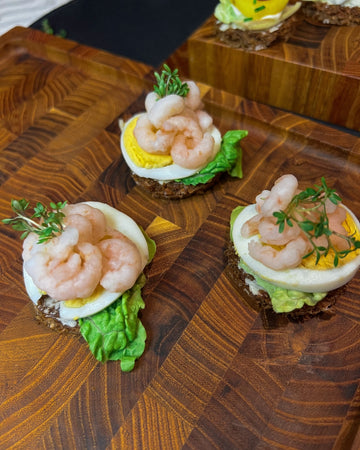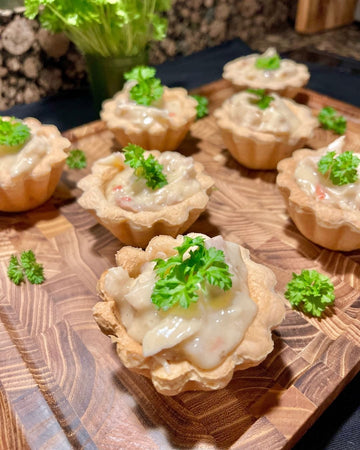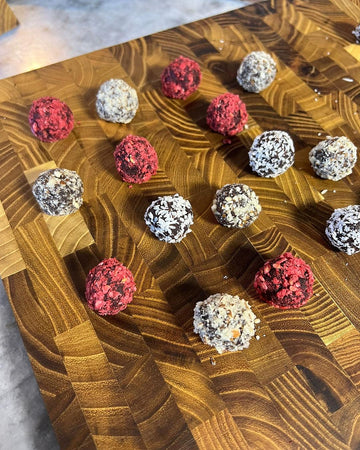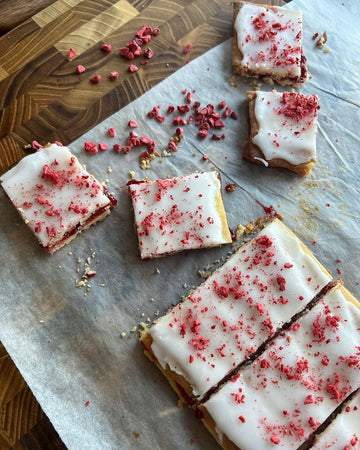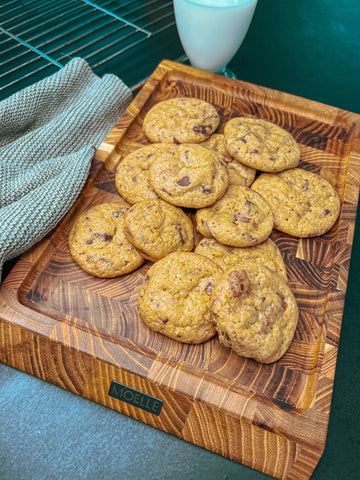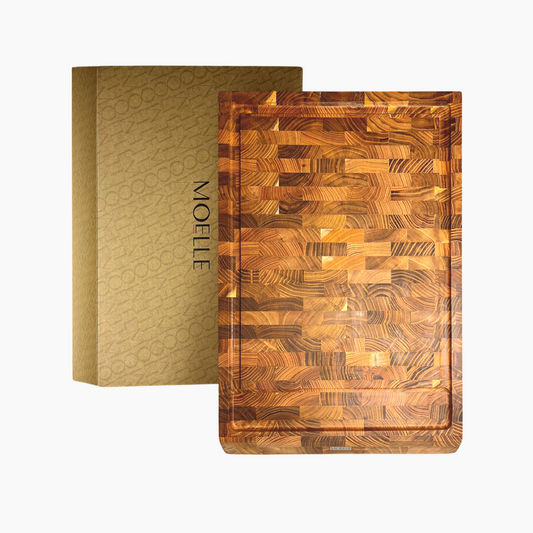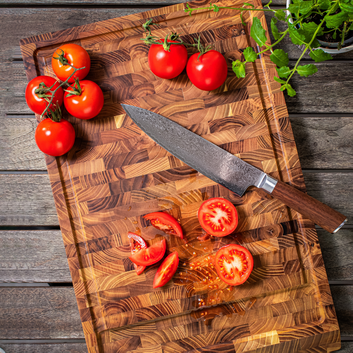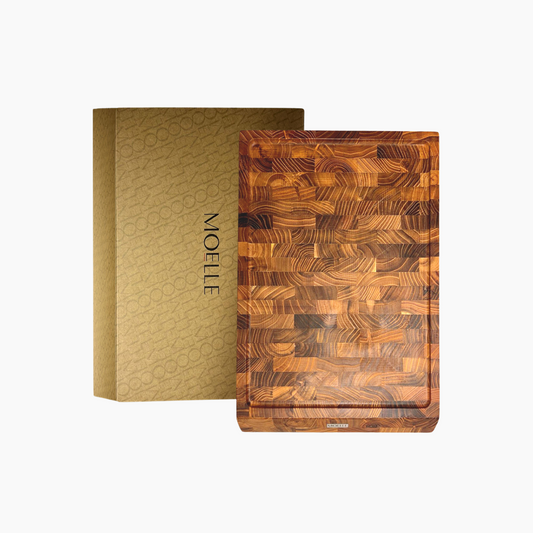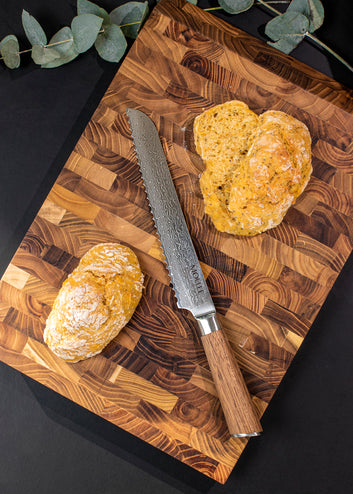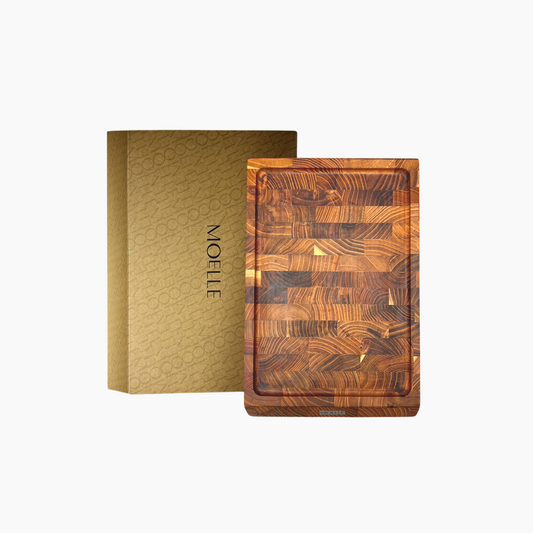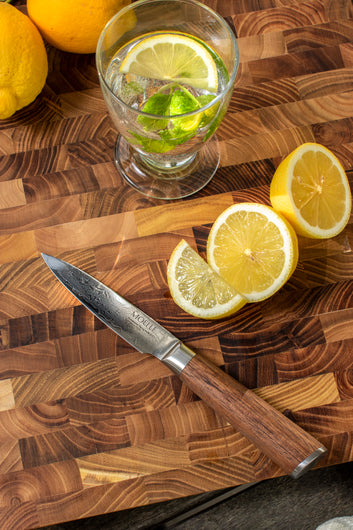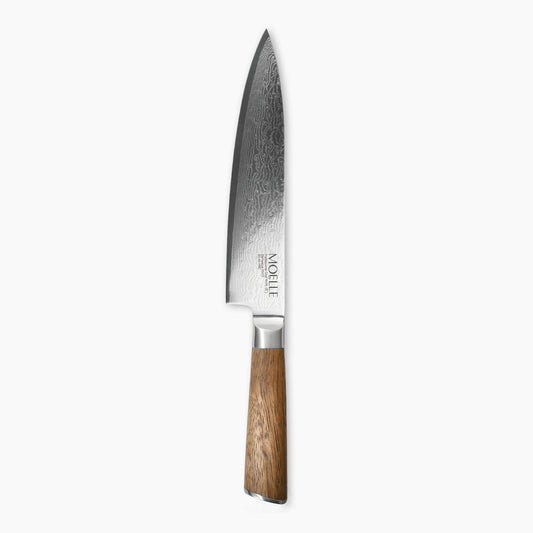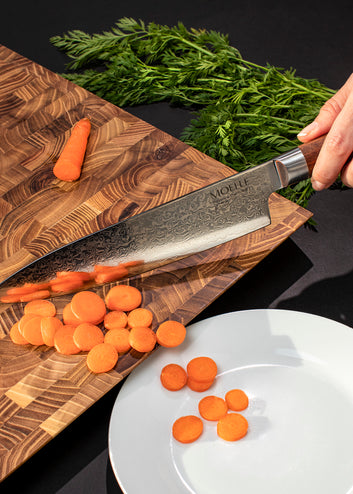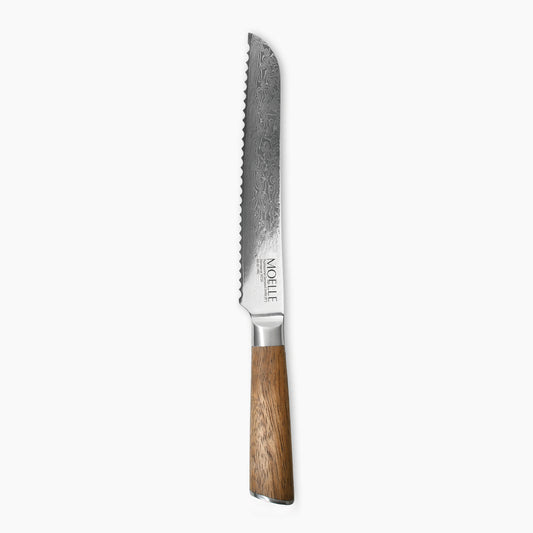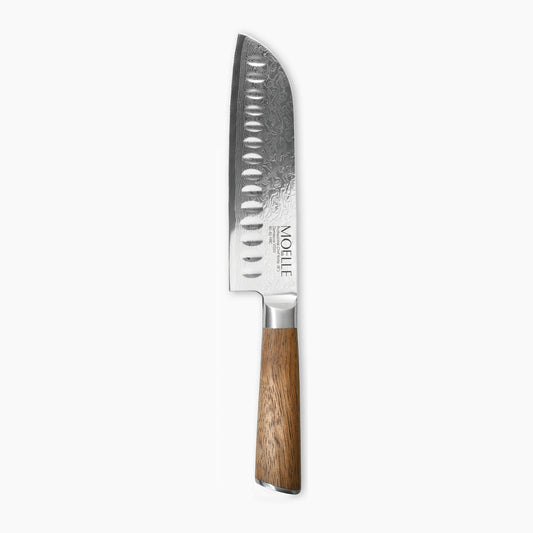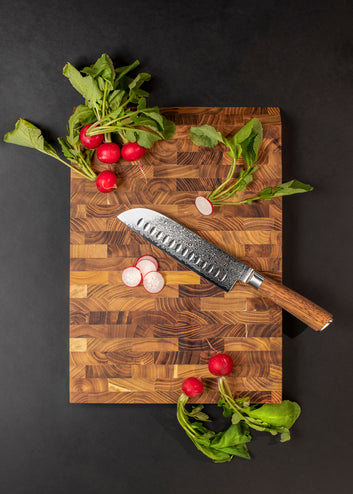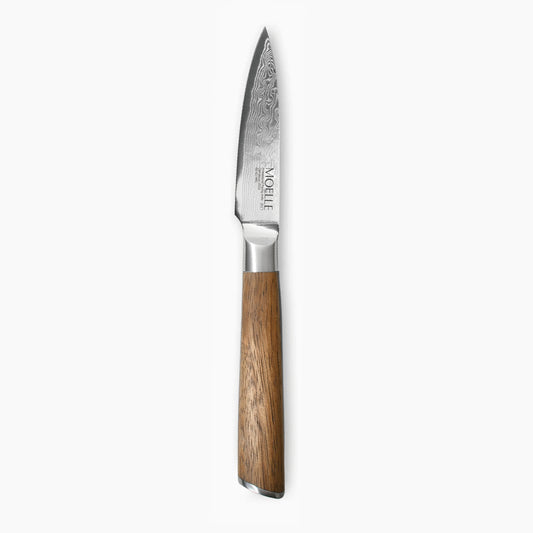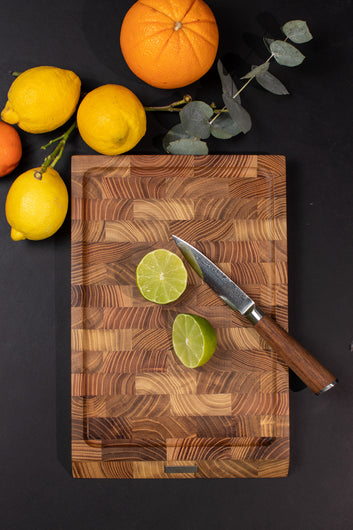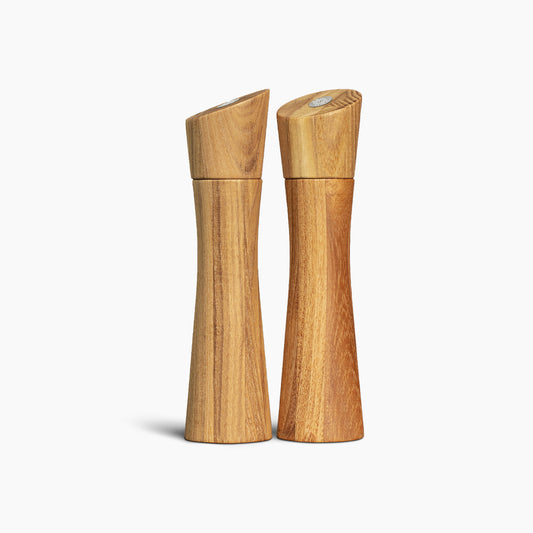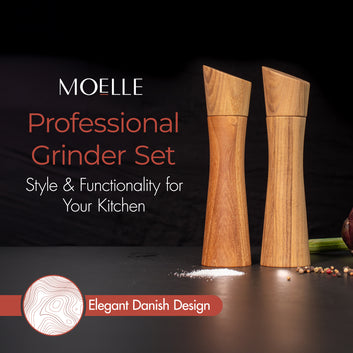Knife Safety 101: For Beginners
Why is Kitchen Knife Safety Important?
Kitchen knives undoubtedly play a crucial role in our kitchen, Yet they also present inherent risks if not treated with care. Annually, a substantial number of individuals sustain injuries while using knives in the kitchen, making it a sobering reality.
The majority of knife-related accidents stem from the improper handling and storage of these sharp tools. However, the encouraging news is that by adhering to straightforward yet essential safety guidelines, the potential for knife-related injuries can be significantly diminished.
Kitchen Knives Safety Guidelines

Maintain Sharpness
Always keep your knives sharp. Dull blades require excessive force, increasing the chances of slipping and using improper cutting techniques.
Correct Grip
Master the art of holding knives properly. The handle grip offers control, while the blade grip (pinch grip) provides enhanced precision. Opt for the blade grip to ensure safer and more efficient cutting.
Mind Your Guide Hand
The guide hand (non-knife hand) plays a crucial role. Keep it behind the blade and use it to stabilize what you're cutting. The claw grip is ideal for larger items, ensuring both stability and finger protection.
Finger Placement
Never place your fingers on the blade while cutting. Even if your grip seems secure, it's easy to accidentally touch the sharp edge. Maintain awareness and always keep your fingers behind the blade.
Proper Knife Handling
Handle knives with care, from maintaining sharpness to adopting the right grip. When passing a knife, present the handle for the receiver to grab, or hold it by the handle with the blade's spine against your hand for easy handling.
Avoid Scraping with Sharp Edge
Refrain from using the sharp edge of the blade to scrape ingredients off a cutting board. This practice not only dulls the blade but also poses a safety risk. Instead, use the dull side of the blade or a designated utensil.
Choose the Right Cutting Board

Prioritize the right cutting surface. Avoid glass, ceramic, or stone cutting boards, which can dull knives and shatter on impact. Opt for wooden or plastic cutting boards to maintain knife integrity and reduce breakage risk.
Limit Knife Use to Food
Restrict knife use exclusively to cutting food. Using knives for tasks like opening cans or prying can damage the blade and increase the risk of accidents. Choose appropriate tools for non-food tasks.
Avoid Licking Knives
Steer clear of tasting food directly off the knife blade. This practice introduces bacteria and can dull the edge, compromising both hygiene and knife functionality. Use alternative utensils for tasting.
Benefits of Practicing Kitchen Knife Safety

Reduced Risk of Accidents
Following proper knife safety techniques significantly lowers the chances of accidents, ensuring that you and your loved ones remain safe while preparing delicious meals.
Enhanced Efficiency
Learning the correct grip and cutting techniques not only prevents injuries but also makes your cutting tasks more efficient and precise.
Confidence Boost
Mastering knife safety builds your confidence in the kitchen. As you become more comfortable with knives, you'll find yourself tackling more complex recipes with ease.
Improved Culinary Skills
By focusing on safety, you'll be able to concentrate on honing your culinary skills, experimenting with various cutting styles and techniques.
Time-Saving
Proper knife skills save time during meal preparation, allowing you to spend less time struggling with cutting tasks and more time enjoying your creations.
Less Food Waste
Accurate cuts from well-practiced knife techniques lead to less food wastage, ultimately saving you money.
Kitchen Knife Safety FAQs
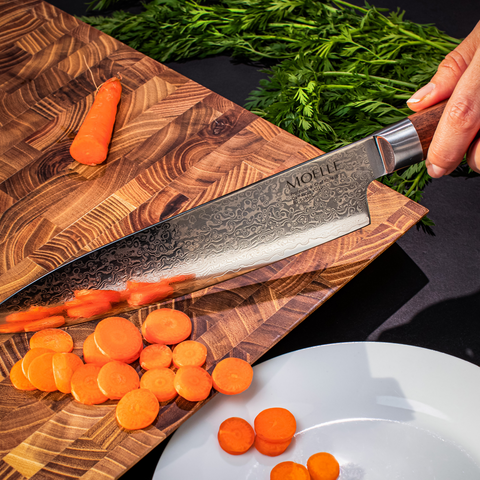
Why is knife selection important?
Proper knife selection ensures that you're using the right tool for the job, enhancing both safety and efficiency. Different knives are designed for specific tasks, so using the appropriate knife reduces the risk of mishaps.
How often should I sharpen my knives?
Regular maintenance is key. You should hone your knives on a honing rod before each use and sharpen them on a stone or with a sharpener every few months, depending on usage.
What's the correct hand placement when cutting?
The claw grip is a safe hand placement technique. Tuck your fingertips in while holding the item you're cutting, keeping your knuckles against the blade's side. This guards your fingers from accidental cuts.
Can I use glass cutting boards?
It's best to avoid glass cutting boards, as they can dull your knives and create a hazardous surface. Opt for wood, bamboo, or plastic cutting boards instead.
How should I store my knives?
Store your knives in a knife block, magnetic strip, or knife drawer organizer to protect both the blades and your hands from accidental contact.
Where to Find Great Quality Knives
If you're on the hunt for superior-grade knives that prioritize kitchen safety, look no further than Moelle Collection Knives. Our store boasts an extensive assortment of knives, encompassing chef's knives, paring knives, and slicing knives, all meticulously crafted from premium materials.
Furthermore, we present a diverse range of knife sharpening blocks, ensuring your knives remain in impeccable shape consistently.
Explore our website today to peruse our array of knives and comprehensive sharpening solutions.
We extend our gratitude for delving into our kitchen knife safety guide. By adhering to the straightforward directives we've delineated, you contribute to averting mishaps and injuries within the kitchen domain. Wishing you delightful culinary experiences ahead!




